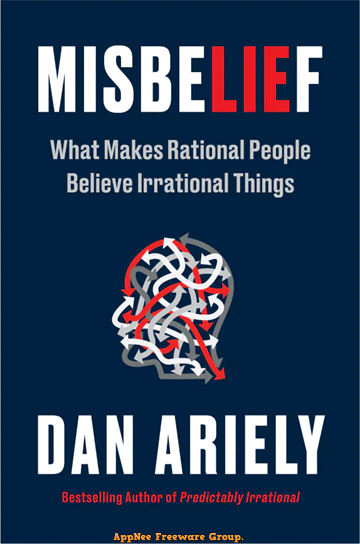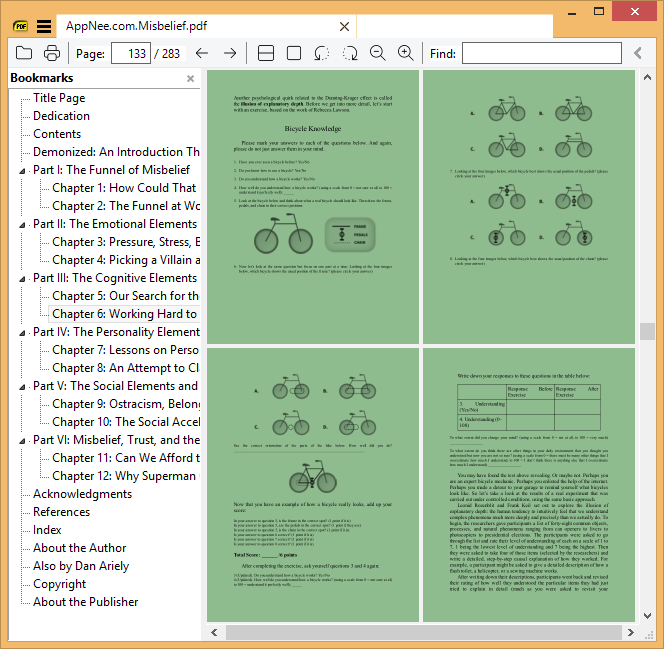| Ⅰ | This article along with all titles and tags are the original content of AppNee. All rights reserved. To repost or reproduce, you must add an explicit footnote along with the URL to this article! |
| Ⅱ | Any manual or automated whole-website collecting/crawling behaviors are strictly prohibited. |
| Ⅲ | Any resources shared on AppNee are limited to personal study and research only, any form of commercial behaviors are strictly prohibited. Otherwise, you may receive a variety of copyright complaints and have to deal with them by yourself. |
| Ⅳ | Before using (especially downloading) any resources shared by AppNee, please first go to read our F.A.Q. page more or less. Otherwise, please bear all the consequences by yourself. |
| This work is licensed under a Creative Commons Attribution-NonCommercial-ShareAlike 4.0 International License. |

Since the publication of Dan Ariely’s weird human behavior series of books, they has attracted countless attention around the world. His works have helped tens of thousands of readers to optimize their work and life decisions, big and small, by understanding behavioral economics, and get better at work and life.
Misbelief continues the author’s research in behavioral decision science. Starting from an “online exposure” incident that the author himself experienced, by explaining the psychological and social processes that lead people to distrust generally accepted truths, accept alternative facts, and even accept misinformation altogether, it reveals the key factors that cause people to fall into disinformation and distrustful relationships: emotion, cognition, personality, and socializing. It helps us understand what drives otherwise rational people to accept irrational beliefs, learn to identify false signals and psychological interference in the behavioral decision-making process, inspire readers to make better decisions, and eliminate prejudice and harm.
Dan Ariely believes that although advanced artificial intelligence has been able to generate convincing fake news stories at an unprecedented scale, we are fully capable of resisting these harms. What we need is a strategy that is not rooted in conflict but in empathy. The sooner we realize that false beliefs and fallacies are first and foremost a human problem, the sooner we can find the real solutions.

// Table Of Contents //
- Part I: The Funnel of Misbelief
- Chapter 1: How Could That Person Believe That Thing?
- Chapter 2: The Funnel at Work
- Part II: The Emotional Elements and the Story of Stress
- Chapter 3: Pressure, Stress, Bending, and Breaking
- Chapter 4: Picking a Villain as a Way to Regain Control
- Part III: The Cognitive Elements and the Story of Our Dysfunctional Information-Processing Machinery
- Chapter 5: Our Search for the Truth We Want to Believe In
- Chapter 6: Working Hard to Believe What We Already Believe
- Part IV: The Personality Elements and the Story of Our Individual Differences
- Chapter 7: Lessons on Personality from Alien Abductees
- Chapter 8: An Attempt to Classify the Role of Personality in the Funnel of Misbelief
- Part V: The Social Elements and the Story of Tribalism
- Chapter 9: Ostracism, Belonging, and the Social Attraction of Misbelief
- Chapter 10: The Social Accelerator
- Part VI: Misbelief, Trust, and the Story of Our Future
- Chapter 11: Can We Afford to Trust Again—and Can We Afford Not To?
- Chapter 12: Why Superman Gives Me Hope: A Final Word (Not Really)
// Download URLs //
| Format | Download | Size |
 |
5.46 MB |
(Homepage)
| If some download link is missing, and you do need it, just please send an email (along with post link and missing link) to remind us to reupload the missing file for you. And, give us some time to respond. | |
| If there is a password for an archive, it should be "appnee.com". | |
| Most of the reserved downloads (including the 32-bit version) can be requested to reupload via email. |